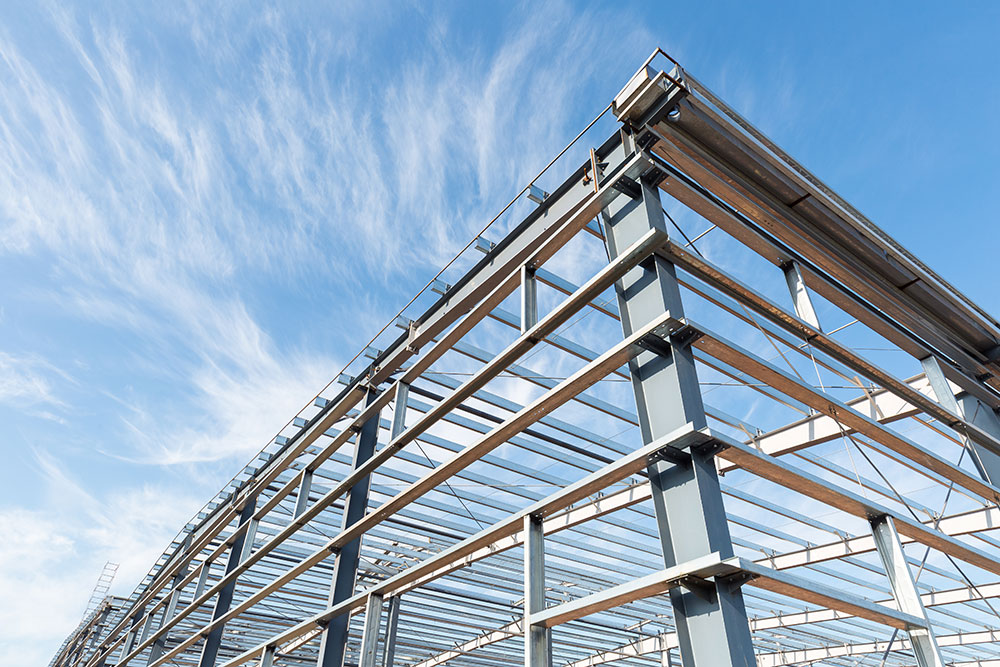Steel defines urban landscapes, combining durability, affordability, and sustainability to make for an unparalleled construction material.
Any glance around a city like New York, Paris, or Dubai will get you more than an eyeful of steel. First developed in the 1850s, this tough metal is as popular as ever, and offers much more than meets the eye. While modern industry continues to develop new construction materials, steel remains widely used in construction, manufacturing, design and beyond.
What are the benefits that make this iconic metal one of the most used metal in today’s world?
High winds, corrosion, hurricanes, you name it—steel framed buildings can handle it. Structural steel outmatches most other materials with a stress yield of 50,000 pounds per square inch. Given the impressive tensile and compressive strength of the material, a high-quality steel building kit from Worldwide Steel Buildings will result in a home that can withstand whatever nature throws at it.
Steel is nonflammable and resists buckling or warping, so it’s a prime choice for areas prone to earthquakes. Because it’s manufactured, unlike wood, it has uniform quality and strength. Furthermore, advances continue to be made that keep steel ahead of other construction materials in terms of standard strength. You might even find that using a steel frame in building construction will lower your insurance costs!

Steel is widely used in a number of sectors, such as construction, infrastructure, mechanical equipment, automotive and, increasingly, aerospace and other transportation sectors. While steel may seem hard and unmoving, it actually offers an attractive balance between strength and versatility of form.
Modern steel technology allows the metal to be sculpted into any variety of forms. Certain kinds of steel are even lighter than wood, and can be cut with greater precision. Its impressive strength, even in small amounts, means that it’s a lot more space-efficient than concrete in construction sites. The predictable nature of steel as a material makes it a perfect fit for design software. For these reasons, steel can be found everywhere from bridges, buildings and tunnels to cars, ships and planes.
Almost 200 years after its invention, steel is still undergoing improvements. Coatings and special formulas are making steel even more flame retardant and resistant to buckling. A joint China-Taiwan engineering team recently developed a Super Steel that beats the strength-ductility trade off that steel typically experiences. This material also offers improved affordability and lightness, proving that you can teach an old metal new tricks!
Because it’s so widely used, steel also offers an advantage in terms of cutting construction time. Contractors and designers working hand in hand can employ 3-D modeling technology to develop custom made steel materials, saving on time and material waste. Existing steel structures can also easily be modified through welding.
Steel is increasingly popular in the residential construction sector, and this has partly to do with the increase in competitively priced options. While certainly not as cheap a material as concrete, steel offers more bang for your buck, combining reasonable prices with unparalleled durability. Steel’s efficiency and lack of waste byproducts also lessens its overall cost.
While some might shirk at the industrial feel of steel, the metal is increasingly becoming a visible element of building design. Exposed frames in steel buildings can lend a sense of rugged beauty along with a demonstration of the material’s durability.
Steel comes in a wide range of colors and textures, and can be either inconspicuous or eye catching. Some designers have even made furniture and apartments entirely from steel, but even when used in smaller amounts, steel can add an air of sophistication to any structure.
Lastly, steel is considered an eco-friendly material for manufacturing. As a metal product, steel is easy to recycle and reclaim. In fact, over 80 percent of today’s steel is made from recycled materials. Demolition teams will pay for the steel from demolition sites, limiting the amount of waste going into landfills from buildings with steel frames. Combined with minimal construction site waste, steel’s recyclability makes it a prime “green” material.
Even as other materials are developed, steel remains one of the most widely used metals around. Designers and contractors increasingly appreciate its aesthetic value alongside its durability and dependability, and it has proven to be an environmentally sustainable material. These key advantages, along with continuing advancements in steel manufacturing, have secured steel’s popularity and usefulness for many years to come.

Rodney Burns
Rodney Burns is a full-time blogger with more than ten years of experience in the industry. Through the years, Rodney has been able to gain thousands of loyal readers because of his ability to write informative and fun pieces.
In this episode, I sat down with Beejan Giga, Director | Partner and Caleb Emerson, Senior Results Manager at Carpedia International. We discussed the insights behind their recent Industry Today article, “Thinking Three Moves Ahead” and together we explored how manufacturers can plan more strategically, align with their suppliers, and build the operational discipline needed to support intentional, sustainable growth. It was a conversation packed with practical perspectives on navigating a fast-changing industry landscape.